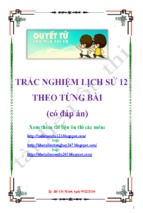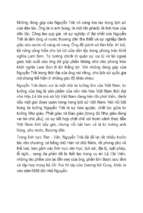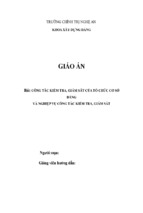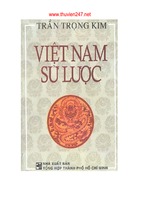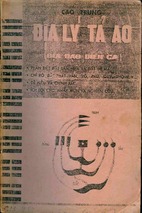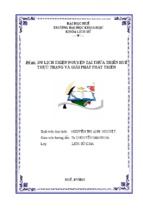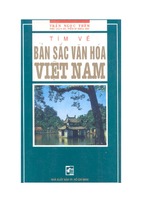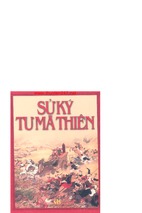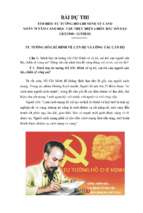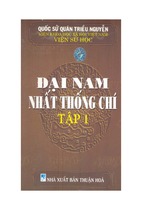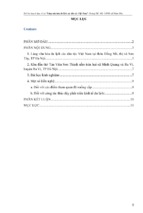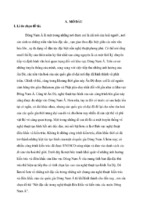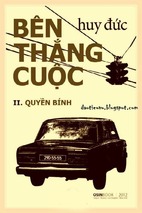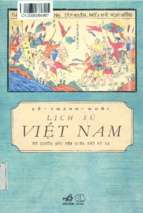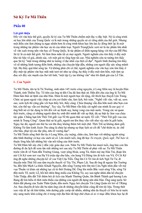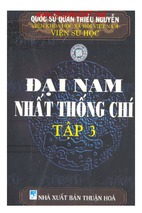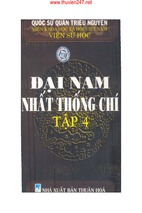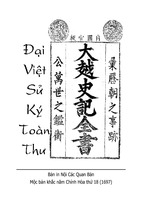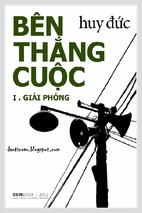London School of Economics
Anti-War Demonstrations and American Public Opinion on the War in Vietnam
Author(s): E. M. Schreiber
Source: The British Journal of Sociology, Vol. 27, No. 2 (Jun., 1976), pp. 225-236
Published by: Wiley on behalf of London School of Economics and Political Science
Stable URL: http://www.jstor.org/stable/590029
Accessed: 22-02-2016 15:25 UTC
REFERENCES
Linked references are available on JSTOR for this article:
http://www.jstor.org/stable/590029?seq=1&cid=pdf-reference#references_tab_contents
You may need to log in to JSTOR to access the linked references.
Your use of the JSTOR archive indicates your acceptance of the Terms & Conditions of Use, available at http://www.jstor.org/page/
info/about/policies/terms.jsp
JSTOR is a not-for-profit service that helps scholars, researchers, and students discover, use, and build upon a wide range of content
in a trusted digital archive. We use information technology and tools to increase productivity and facilitate new forms of scholarship.
For more information about JSTOR, please contact
[email protected].
Wiley, London School of Economics and Political Science and London School of Economics are collaborating with
JSTOR to digitize, preserve and extend access to The British Journal of Sociology.
http://www.jstor.org
This content downloaded from 203.113.130.209 on Mon, 22 Feb 2016 15:25:37 UTC
All use subject to JSTOR Terms and Conditions
2
jfuneI976
27 J>umber
of Sociolo Volume
Brztish
jfournal
E. M. Schreiber
andAmerican
Anti-wardemonstrations
publicopinionon thewarin Vietnam
ABSTRACT
Evidencewas broughtto bear on the questionof the creditingof
with the Americanpublic'sdisanti-Vietnamwar demonstrations
enchantmentwith the war in Vietnam. Demonstrationshad no
measurableeffect on the declinein favourablepublic opinionas
measuredby Vietnam-relatedpoll and survey questions;such
changesin opinionslargelywereexplicableby otherfactors(presidentialpolicyinitiativesand war-relatedeventsin the short-run;
casualtiesand durationof the warin the long-run).The American
public'sgeneraldislikefor Vietnam war protestersalso makesit
couldhaveservedas 'mediatinglinks'
unlikelythat demonstrations
betweenthe war and the Americanpublic; it appearsthat the
news media servedthis purpose.The majorimplicationof this
account is that anti-wardemonstrationsin the U.S.A. are not
effectiveinstrumentsfor changingAmericanpbulicopinion.
On several occasions,the late PresidentHo Chi Minh of North
Vietnamnoted occurrencesof anti-Vietnamwar protestin the United
Statesand expressedhis gratitudeto the Americanswho demonstrated
in oppositionto theirgovernment'spoliciesin Vietnam.lTheseremarks
probablywould be best interpretedas appreciationfor the sentiments
that the protestersexpressed;PresidentHo does not appear ever to
have stated that he thought anti-Vietnamwar proteststhemselves
wouldhaveany effecton whatthe Americangovernmentdecidedto do
in Vietnam.
sought
One wouldsuppose,though,thatanti-Vietnamdemonstrators
to changeAmericanpolicyin Vietnamin termsof one basicobjective:
the withdrawalof American troops from Vietnam.2 How protest
wouldyield this resultdoesnot appearto have been explicitlyspelled
out. Presumably,however,anti-Vietnamwar protestin largepart was
intendedas 'educational',to convertthe Americanpeopleto the antiwar perspective.3According to some accounts, these efforts were
successful.One observer commentedthat some returned Vietnam
veterans'were expressingtheir disgust [with the Vietnam war] long
beforeantiwarprotestshad begun to make a seriousdent on public
opinion'.4Anotherassertedthat 'the war [in Vietnam]would still be
225
This content downloaded from 203.113.130.209 on Mon, 22 Feb 2016 15:25:37 UTC
All use subject to JSTOR Terms and Conditions
E.M. Schreiber
226
goingon with CBS coveringit like an apoliticalboxingmatch,had it
notbeen for the protestingpeoplein the streets'.5
Much ofthe American public's disenchantmentwith the war in
Vietnam(as reflectedby the polls), as well as the Americangovernment'seventualde-escalationof the warandwithdrawalof troopsfrom
Vietnam,took place againsta backdropof anti-Vietnamwar demonstrations.If demonstrationswere creditedwith bringingabout these
had conchanges,presumablyone would argue that demonstrations
vertedpublic opinion which in turn (presumably)encouragedthe
administrationto change its Vietnam policies. If anti-war demonstrationscan be shown to have had their intendedeffiectson public
opinion,then ( I ) any (rational)would-be demonstratorscan look
forwardto takingto the streetswhen next the Americangovernment
hintsat plans to implementor implementsa foreignpolicy of which
or the threatof demonstrations
theydisapprove,and (2) demonstrations
canserveas a constrainton the Americangovernment'sdecisionsabout
militaryinterventionin other parts of the world (otherwisedemonstrationscan be ignored).
The purposeof this investigationis to assess the impact of antiVietnam war demonstrationsin the U.S.A. on the changesin the
Americanpublic'sviews about the Vietnamwar. In the accountthat
follows,short-run,long-run,and 'mediating'effectsof anti-Vietnam
on Americanpublicopinionare consideredin the
war demonstrations
latterhalf of the I960S and the beginningof the I970S.
DEMONSTRATIONS:
SHORT-RUN
AND LONG-RUN
EFFECTS
If the declinein the Americanpublic'ssupportfor the warin Vietnam
it would be reasonable
were attributableto anti-wardemonstrations,
to expectthat thissupport(as indicated,for example,by the Vietnamrelated Gallup poll questions)would have droppedoff after major
demonstrationstook place. An ingeniousstudy of this questionwas
done by Berkowitz,who enumerateddemonstrationswith IO,OOO or
BorkTimesbetweenI965 and
moreparticipantsas reportedin the J%ew
I97I and then examinedfluctuationsin percentagesin three Gallup
poll time-seriesfor five periodsrangingfromone month to two years
later.6The majorfindingwas that Americanpublic opinion did not
appear to respondto anti-Vietnamwar demonstrationsin terms of
eitherdisapprovalof Americaninvolvementin Vietnam,disapprovalof
the President'shandlingof the Vietnam situation,or disapprovalof
the President'shandling of his job. There was, however,a modest
relationshipbetween the occurrenceof a demonstrationand a subsequentincreasein favourableopinionof the President'shandlingof the
Vietnamsituation.7
The resultsobtainedin Berkowitz'sstudy are persuasiveindicators
did not turn Americanpublicopinionaway from
that demonstrations
This content downloaded from 203.113.130.209 on Mon, 22 Feb 2016 15:25:37 UTC
All use subject to JSTOR Terms and Conditions
andU.S.publicopinion
Anti-wardemonstrations
227
supportfor the war in Vietnam.The failureof a relationshipto emerge
and reducedwarsupport
betweenoccurrenceof a majordemonstration
seems even more noteworthywhen contrastedwith Vietnam-related
poll questionsin which there were sharpchangesof opinion that did
appearlinkedto events.Perhapsthe most strikingof these eventswas
the Tet offensiveat the end of January I968, in which the National
LiberationFront launched simultaneousattacks on major cities of
SouthVietnam.8If the Tet offensivehad a 'message'for the American
announced
people,it was that contraryto theJohnsonadministration's
favourable
interpretations,the war was going badly and a denouement
to the Americanswas not in sight. An effect of the Tet offensivewas
reflectedin the public'schangein preferencefrom'hawk'('stepup our
militaryeffort') to 'dove' ('reduceour militaryeffort') between the
Januaryand March I968 Gallup polls; one observercalled this 'the
largestand mostimportantchangein publicopinionduringthe entire
war'.9Another apparentlyTet-relatedchange was the decline from
one-halfto one-thirdin the proportionof Americanswho thoughtthat
the U.S. was 'making progress'in Vietnam.l° Other Tet-related
changeswerereductionsin the public'sapprovalof PresidentJohnson's
as President.ll
handlingofthe Vietnamsituationandof hisperformance
QuiteapartfromTet, the othermajorshort-runinfluenceson Vietnamrelated opinions were Presidentialpolicy changes. For instance,
approvalof PresidentJohnson'shandling of the Vietnam situation
increasedby I5 percentagepointsin the monthfollowinghis 3I March
of a partialhalt to the bombingof NorthVietnam
I968 announcement
and his willingnessto negotiatea settlementto the war.l2 Similarly,
approvalof Americanbombingof Hanoi and Haiphongincreasedby
35 percentagepoints over the two-monthperiod when this became
Americanpolicyin Ig66.l3Theserelationshipsindicatethat American
public opinion on Vietnam-relatedmatters was not insensitiveto
events:it respondedto a dramaticchangein the war situationand it
respondedto Vietnampolicy changes.But it did not respondto antiwar demonstrations.
If it were concededthat anti-wardemonstrationsdid not have a
short-runeffect (even up to 24 monthslater, as shownby Berkowitz),
had long-runeffects,effects
it still couldbe arguedthat demonstrations
that were confoundedby other events,and that the cumulativeeffect
of anti-Vietnamwar demonstrationswas to reduce the American
public'ssupportfor the war in Vietnam. It could be pointedout, for
example, that the Gallup poll question on supportfor the war in
Vietnam (one of the three used by Berkowitz)did show that support
for the war declined(moreor less gradually)from I965 onward and
that thisdeclinemightindicatethatthe 'message'of the demonstrations
was (moreor lessgradually)receivedby the public.This argumenthas
surfaceplausibility.It also has anotherfeature:it appearsimpossible
to specifythe criteriaforits falsification.If the effectsof demonstrations
This content downloaded from 203.113.130.209 on Mon, 22 Feb 2016 15:25:37 UTC
All use subject to JSTOR Terms and Conditions
Schreiber
M.
E.
228
events,then the assumed
cumulativeand 'confounded'by other
are
If theseeffiectscannot
cannotbe distinguished.
of demonstrations
effects
they are thereat
whether
is
then an obviousquestion
distinguished,
be
declinein Vietnamwar
Were thereno other explanationsfor the
all.
supportable,then the
that were empiricallysupportedor
support
argumentat least
of the cumulative-effects-of-demonstrations explanations
viability
alternative
be enhanced.Thereare, however,some with declines in prowould
show the associationof other variables
that
war-relatedopinions.
Vietnam
in supportfor the war in
Mueller'sexplanationfor the decline
than anti-war
one that used American casualtiesrather
Vietnam,
Galluppoll
the
with
well
fit
as the causalvariable,did
demonstrations
question;indeed,it explainedgo per
on the support-for-the-war
data
for these Vietnam
of the variance.l4In additionto accounting
cent
for most of the
accounts
the casualtiesexplanationalso
opinions,
Koreanwar almosttwo
in Americanpublic'ssupportfor the the Vietnamwar in at
variance
with
previously-a war that contrasted
decades
(if any) visibleanti-war
two importantrespects:( I ) it elicitedfew
least
(as measuredby
sentiment
and (2) pro-involvement
demonstrations,
for a sharpdropfollowing
polls)was fairlystableover time exceptarmy in the latter part of
the
theinterventionof the mainlandChinese
Vietnamand the Koreanwars
Igso.l5The basicfindingfor both the
casualtiesincreasedby
in Mueller'swords,'everytime American
was,
by about I5 percentage
afactorof I0, supportfor the war declined
declinein popularity
the
for
Mueller'scasualtyexplanation
points.'l6
over the anti-war
advantages
ofthe war in Vietnam, then, has twothe data, and (2) it is a more
explanation:(I) it fits
demonstrations
for the decline in popular
generalexplanationin that it accounts
was unmarkedby anti-war
that
supportfor an earlier'limited'war
demonstrations.
cost, and when visible
Casualtiesare a symptom of what wars
publicincreasinglywill
is limited,it can be expectedthat the
progress
balancebetweencostsand
seethe war as representingan unfavourable that supportfor such a
benefits.This would lead to the proposition
the longerthewar'sduration,
wardropsoffsimplyas a functionoftime:
war in Vietnam (but not
the
of
the less its popularity.In the case Galluppoll data and explains
Korea),this interpretationalso fits thethe Vietnamwardeclinedat an
go percentof the variance:supportfor two months.17 And although
averagerate of roughlyI per cent every
can be appliedto the
the dataarelessextensive,a similarinterpretation
war in Indo-Chinain the
Frenchpublic'sresponseto their country's
supportfor a 'limited'war as a
late I940S and early I950S: declining explanationalso mightfit the
The casualties
functionof its duration.18
point, though,is that a gradual
declinein supportfor this war. Thesusceptible
to explanationsother
declinein war supportover time is case of the Americanpublic's
than anti-wardemonstrations.In the
This content downloaded from 203.113.130.209 on Mon, 22 Feb 2016 15:25:37 UTC
All use subject to JSTOR Terms and Conditions
and U.S. publisopinion
Anti-wardemonstrations
229
supportfor Vietnaminvolvement,it will be recalledthat roughlygo
per cent of the variancewas explainedwhethercasualtiesor monthof
poll servedas the independentvariable.It appearsdoubtfulthat the
to eitherexplanationwould add
additionof anti-wardemonstrations
morethan clutter.
DEMONSTRATIONS
AS MEDIATING
LINKS'
Neitherthe casualtiesnor the durationexplanationfor the declinein
the Americanpublic's support for the Vietnam war considersthe
questionof 'mediatinglinks'betweenthe war'scosts and benefitson
of thesecosts
one handand the public'sperceptionsandinterpretations
and benefitson the other. As a variationon the theme of long-term
effects, it might be suggestedthat anti-wardemonstrationswere a
crucialpart of communicatingthe negativeaspectsof the war to the
American people. That is, while the American casualty rate, for
that helped
example,was simplya statistic,it was the demonstrations
'bringthe messagehome'to the public.Accordingly,it couldbe argued
that the casualtiesand the durationexplanationsare not in conflict
to, the argumentthattheAmerican
with,but ratherarecomplementary
with the Vietnamwar is attributable
public'sgradualdisenchantment
to anti-wardemonstrations.As a variationof the long-termeffects
argument,the mediating link argumentshares the feature of not
and
providinga meansfor distinguishingthe effectsof demonstrations
as such preventsany direct empiricaltest. As will be seen below,
however,indirect evidenceindicatesthat it is unlikelythat demonstrationsservedas a mediatinglinkto the Americanpublic:the public's
usualsourcefor informationabouteventsfar fromhome was tlle news
andtelevision);probablynotmanypeople
media(especiallynewspapers
or spokesmenfor news
paid muchattentionto anti-wardemonstrations
coverageor for their'editorial'interpretationsof tlle war in Vietnam.
Certainlya major,if not the major,factorin communicationis the
audience'sattentionto and acceptanceof, or favourableopinion toward,the communicatingsource.The data showthat mostAmericans
madeuse of at leastone of the newsmediaand that the public'sviews
toward such sources as newspapersand television generally were
neutralif not favourable.l9While there appearto be no data on the
public'sattentionto those who protestedagainstthe war in Vietnam
the dataareclearin showing
as a sourcefornewsor newsinterpretation,
that Vietnamwar protesterswerelookeduponwith disfavour.Indeed,
in I968 the Americanpublicgave Vietnamwar protestersan average
(mean)ratingof 28.4 on a scalethat rangedfromzero (veryunfavour.20 Given the surfaceplausibilityof the
able) to I OO (veryfavourable)
idea that a sourcethatis lleldin disesteemis unlikelyto proveitselfvery
influentialin convertingopinions,it seemsunlikelythat Vietnamwar
protesterswouldhavewon manyAmericansto theirway of thinking.
This content downloaded from 203.113.130.209 on Mon, 22 Feb 2016 15:25:37 UTC
All use subject to JSTOR Terms and Conditions
230
E. M. Schreiber
The idea of a relationshipbetween an audience'sfeelingstoward
the sourceof a communicationand the subjectof the communication,
and on the effectsof thisrelationshipon opinionformationand opinion
change,is containedin the consistency(balance)theory.The balance
theory deals with attitudinalor affectiveconsistencybetween three
linkedelements(audience,source,and object)and assumesthat (I) the
relationshipis balancedwhenthe productof the threesignsis positive
and not balancedwhenthe productis negative,and (2) whilebalanced
relationshipsare stable,unbalancedrelationshipsare not and accordingly are likely to change so that balance is obtained.2lNow, since
Vietnam war protestersobviouslydid not like the war in Vietnam
(- sign), Robinson pointed out that whell the balance theory is
appliedto the relationshipbetweenthe public,protesters,and the war,
the publiclikesprotesters( +)
thereareonlytwobalancedrelationships:
and dislikesthe war (-), or the publicdislikesprotesters( ) and likes
the war ( +).22 This means,for example,that the opinionsof persons
whofelt favourablytowardsboththe warand towardsprotesterswould
be unstableand that at least one opinionwould be likely to change.
This alsomeansthat giventhe largelynegativeopinionsthat the public
had of Vietnam war protesters,balanced (i.e., stable) relationships
wouldbe whenthe publichadpositive opinionsaboutthe war.In other
words,the balancemodelwouldlead to the predictionthatthe e-ffectof
on the Americanpublicwouldbe to reinforce
anti-wardemonstrations
public supportfor the war, while amongthosesegmentsof the public
would lead to pro-war
that were undecided,anti-wardemonstrations
opinions. From the anti-war protester'spoint of view, then, antiwould be counter-productive.23
Vietnamwar demonstrations
Since at least duringthe firstfew yearsof Americanmilitaryaction
in Vietnam, the public's general supportfor the war would be in
balancewith negativefeelingstowardanti-warprotesters,it might be
supposedthat supportfor the war led to dislikefor thosewho protested
againstit. This suppositionseems unlikely,however,given the consistencyof pollsand surveysin showingthe unpopularityof dissentand
protestbehaviourin the U.S.A. almostirrespectiveof issue content.24
This findingsuggeststhat Vietnamwar protesterswere unpopularnot
becausethey were expressingoppositionto the war in Vietnam,but
simply becauseof the behaviourin which they were engaged; they
were dissenters,deviantsand were evaluatedaccordingly.25
The negative public views of Vietnam war protestersand the
predictionby consistencytheory that increasedsupportfor the war
seeminconsistentwith the declinein
wouldresultfromdemonstrations
weregoing on. A resolution
the war'spopularitywhile demonstrations
of this seeminginconsistencylies in Robinson'sfindingof a low rankorder correlationbetween the American public's feelings toward
Vietnamwar protestersand opinionson what to do in Vietnam;as a
reasonfor the low correlation,he suggestedthat 'manysnembersof the
This content downloaded from 203.113.130.209 on Mon, 22 Feb 2016 15:25:37 UTC
All use subject to JSTOR Terms and Conditions
and U.S. publicopinion
Anti-wardemonstrations
23I
public simplydo not mentallyjoin togetherthe two attitudes'.26That
is, the publictendednot to associateits opinionsaboutthe war with its
feelingstoward Vietnam war protesters.The reasonfor this lack of
association,in turn, may be found in Schuman'sinterpretationof
'two sourcesof antiwarsentiment'.Accordingto Schuman,students
reactedto the Vietnam war on moral groundswhile the public saw
thingsin very pragmaticfashionand as such was not much interested
in, or impressedby, argumentsand 'information'based on moral
criteria;27hence,becauseprotestersand the publicby and largeevaluated the war using differentframesof reference,anti-Vietnamwar
did not communicateaboutthe warto mostAmericans.
demonstrations
The conclusionsto which this discussionleads, then, are that (I) if
did not communciatewith the public, they could not
demonstrations
have had mucheffecton the public'sopinionsaboutthe war, and (2) if
demonstrationsdid communicatewith the public, consistencytheory
These
wouldbe counter-productive.
wouldpredictthat demonstrations
conclusions,in turn, make dubiousthe argumentthat anti-Vietnam
war demonstrationsserved as a 'mediatinglink' in the changes in
Americanpublicopinionaway fromsupportfor the war in Vietnam.
The newsmedia,on the otherhand,havebeenassumedto occupyan
importantplace in communicatinginformationand interpretations
aboutworldevents.C. WrightMills,for instance,saw the newsmedia
as 'agents'and 'servants'of the national'powerelite' in shapingthe
With the war in Vietnam,
public's thinking (via 'manipulation').28
however,this tie-in apparentlywas less than completesince,beginning
in the summerof I 967, newspapersandnewsmagazineswereweakening
in theirsupportforthe warandforAmericanpoliciesin Vietnam,while
editorialsin majornewspapersand on the nationaltelevisionnetworks
Vietnam
turnedquiteexplicitlyagainstcontinuingPresidentJohnson's
policiesafterthe Tet offensivein early Ig68.29Note of the changesin
the printednews media was taken by Hamiltonand Wrightwho examinedthe I964 to I968 dropin the proportionof the Americanpublic
thatfavoured'a strongerstandin Vietnam'as an effectof readingnewspapers and news magazines.30They found that the largest changes
away from the strongerstand option were among upper-middle-class
whiteProtestantsand that,withinthisgroup,the changewasassociated
with increasedreading of newspapersand news magazines;the inferencewasdrawnthat thislatterrelationshipwasa resultof the shiftto
a scepticalor anti-warstanceamongthe majornewspapersand news
magazines.3lThe Hamiltonand Wrightfinding,then, was that in the
segment of the public where the largest shift in Vietnam opinions
occurredbetweenI 964 and I 968, thisshiftwasassociatedwithattention
to the printednews media. It could be that the opinion change was
due to the changein editorialpositions,or it could be that the change
was a reflectionof being better informedabout what the war was
costing(e.g., via picturesof dead and woundedAmericans).In either
This content downloaded from 203.113.130.209 on Mon, 22 Feb 2016 15:25:37 UTC
All use subject to JSTOR Terms and Conditions
E. M. Schreiber
232
case,though,the propositionthat the newsmediaservedas the 'mediating link' between the war and the Americanpublic seems more
plausiblethan the propositionthat anti-wardemonstrations
servedthis
purpose.
CONCLUSION
The major point to be gleaned from this review is that there is no
evidencethat showsan effectof anti-Vietnamwar demonstrations
on
reducingthe Americanpublic'ssupportforthe warin Vietnamor that
showsan effectof demonstrations
on Vietnam-related
opinions.Unlike
eitherforthe Tet offensiveor forpolicyinitiativesby PresidentJohnson,
there were no visible short-runeffects on public opinion that were
attributableto demonstrations.While a long-run effect of demonstrationscouldbe asserted,the assertionas suchis not directlytestable;
by contrast,alternativelong-runexplanationsin termsof casualtiesor
durationof the war were testable,and when testedexplainedmost of
thevariancein the declinein the public'ssupportfor the warovertime.
The unpopularityof Vietnamwarprotesters,plusthe lackof association
between public opinion on the war and feelings toward protesters
suggestthat demonstrations
largelywereirrelevantto Vietnam-related
opinions.The changein Vietnamopinionsof thesegmentforthe public
that was most attentiveto the printednews media between I964 and
I968 suggeststhat this opinion change was linked to changesin the
Vietnam-relatedviews expressedby the news media. The assumption
that anti-Vietnamwardemonstrations
reduced,or helpedto reduce,the
Americanpublic'ssupportfor the Vietnamwar, then, is not supported
by the evidence.
E. M. Schreiber
BA. PII.D.
VisitingAssistant
Professor
of Sociology,
Carleton
University
Notes
I. See Ho-Chi-Minh, On Revolutzon:read his 20th-centuryhistory (and the
SelectedkEritings,I9266,
edited by evidence suggeststhat he has), he will
Bernard B. Fall, New YorknPraegern knowthatbig powersgenerallylosesmall
I967,
pp.
36I,
369-70,
377-8.
In wars,not on the battlefieldbut at home.
'Questionsabout Viet Nam', Encounter,His interestin the liberalprotestmovevol. 30, no. I (January I968), p. I0,
ment in the United States is not
AlastairBuchancommentedthat'Ameri- mistaken.'
cans are not patient people'. He went
. According to anti-war actis7ist
on to note that 'if Ho Chi Minh has Tom FIaydenin Rebellion
andRepression.
This content downloaded from 203.113.130.209 on Mon, 22 Feb 2016 15:25:37 UTC
All use subject to JSTOR Terms and Conditions
Anti-wardemonstrations
andU.S.publisopinion
Cleveland, Ohio, World Publishing
Company, I 969, p. 25, 'the antiwar
movementbegan with the premiseand
with the expectationthat Vietnamwas a
mistakewhich could be broughtto the
attentionof the government'.
3v Ibid., p. 35.
4. MurrayPolner,J%o
Victory
Parades:
The Returnof the EietnamFeteran,New
York, Holt, Rinehart and Winston,
233
GallupOpinion
Index,reportno. 35 (May
I968),
pp. 2, I 7. Approval'of the way
PresidentJohnsonis handlingthe situation in Vietnam' droppedfrom 39 per
cent in January I968 to 26 per cent in
late March. Approvalof Mr Johnson's
performanceas Presidentdroppedfrom
48 per cent in FebruaryI968 to 36 per
cent in late March.
I 2. See ibid.
I97I,
p.
I5I
I 3. The data are presentedin John E.
5. Nicholas von Hoffman, 'Good
Mueller, War, Presidentsand Public
Citizens Don't Ask Why', Washington Opinion,
New York,Wiley, I973, p.70.
Post (2 May I975), p. B8. A similar
I4. Ibid, pp. 59-62.
assumptionappearsto have been shared
I5. The sharp drop in the American
by sociologistRobert Nisbet. In 'Who public'sapprovalof involvementin the
Killed the Student Revolution?' En- Korean war is reported in 'Public
counter,
vol. 34, no. 2 (FebruaryI970),
Opinion and the Korean War', Gallup
p. I6, Nisbetstatedthat 'had it not been
PoliticalIndex,reportno. 3 (AugustI 965),
for the passionate attack from the p.26. For graphsthat show the percentstudent Left, the curse upon America ages of the Americanpublic supporting,
[the Vietnam war] that began sub- opposing and with no opinion on
stantiallyin the early I960S might well Americaninvolvementin Korea and in
have continued much further into the Vietnam,see Mueller,op. cit., p. 50 (for
future'.
Korea)andp. 56 (forVietnam).The per6. WilliamR. Berkowitz,
'The Impact centagesare presentedin ibid., pp. 45-7
of Anti-VietnamDemonstrationsUpon (for Korea)and pp. 54-5 (forVietnam).
National Public Opinion and Military AnothergraphforAmericanopinionson
Indicators',Soc. Sci. Res., vol. 2, no. I involvementin KoreabetweenJune I 950
and September I953 (using differently
(MarchI973), pp. I-I4.
7. Ibid., pp. 9-I 0.
wordedpollandsurveyquestions)isfound
8. For an extended treatmentof the in William A. Scott and Stephen B.
Tet offensive,see Don Oberdorfer,Tet!, Withey, The UnitedStatesand the United
Garden City, New York, Doubleday, Nations:ThePublicEiew,s945-z955,New
I97I E
York, ManhattanPublishingCompany,
9. Howard Schuman, 'Two Sources I958, p. 79. Anothergraphfor Vietnam
of Antiwar Sentiment in America', opinionsappearsin Berkowitz,op. cit.,
Amer.jr. Sociol.,vol. 78, no. 3 (November p.6.
I 972),
p.
5 I 5. Actually Schuman's
I6. Op. cit., p. 60. Italicsomitted.
treatment of this matter is a bit misI 7. The Galluppoll percentages
were
leading because unlike George Gallup, the sameas thoseusedby Mueller,ibid.)
'PublicOpinionand the VietnamWar', pp.54-5.
The independentvariablewas
Gallup OpinionIndex, report no. 52 monthof poll, withJuly I965 servingas
(October I969), pp. 9-II, he neglected month one. Followingare the resultsof
to include the resultsfor the hawk-dove these computations(columnsA and C)
questionsfrom the Gallup poll of early and, for purpose of comparison,those
and late February I968. As such, one reported by Mueller, ibid., p. 6 I, in
would not ]earnfrom Schumanthat (as which the logarithm of American
Gallup, ibid., p. I 0, previously had casualtieswas the independentvariable
noted) the Tet offensive 'initially in- (pleasesee table at top of facingpage).
creasedthe number of "hawks" who Since the unitsof the dependentvariable
wantedto "strikeback"' (italicsadded). were percentagepoints and those of the
I0. These Galluppollsare reportedin
independentvariablewere months, the
Oberdorfer,op. cit., p. 246.
slopesin columnsA and C indicatethat
I I. The percentagesare found in the
supportdeclinedat a rate of slightlyless
This content downloaded from 203.113.130.209 on Mon, 22 Feb 2016 15:25:37 UTC
All use subject to JSTOR Terms and Conditions
E. M. Schreiber
234
Per centsupportby
Month Casualties
(A)
(B)
Slope of regression line
Standard error of
regression coefficient
Standard error of estimate
R2
47
(-o4)
3-33
*88
-I6-5I
(I-I6)
3-20
*90
Per centopposedby
Month Casualties
(C)
(D)
+ 57
(.o4)
4-23
*88
+20-I2
( I 34)
3-70
*9I
I 9. For a reviewof data on American
than one-halfof a percentagepoint per
monthand that oppositionincreasedat a public opinion towardthe news media,
bit more than one-half a percentage see Hazel Erskine,'The Polls: Opinion
point per month, respectively. The of the News Media', Publ. Opin.Quart.,
pp.
standard errors of the regressionco- vol. 34, no. 4 (Winter I970-I),
The indicatorsof 'credibility'
efficients for columns A and C are 630-43.
proportionately similar to those in and 'liking'largelyare indirect,but the
columnsB and D; also similar are the I960S vintage polls seem to supportthe
standard errors of estimate. (The dif- summarystatementthat the American
ference between the standarderrorsof public believedin the freedomto print
estimate in columns C and D, for news without censorshipand controls,
example, amounts to one-half a per- and in the overall fairness of news
centage point.) These similarities, in coverage.Accordingto a I970 national
turn, indicate that the regressionof survey reported in Robert T. Bower,
support/oppositionto the war in Viet- Eeleuision
andthePublic,New York,Holt,
nam on monthof poll fitsthe data about Rinehart and Winston, I973, pp. I04,
as well as the regressionof support/ I07, 54 per cent of the Americanpublic
oppositionon casualties.The proportions thoughtthat televisionnewscasters'give
of the varianceexplained(R2)by month the news straight',and 26 per cent that
of intervieware virtuallyidenticalto the news was 'coloured' by newscaster
proportionsexplainedby casualties.
opinions.The remainderdid not know
I 8. Surveys of public opinion in
or had 'mixed'views. For those with a
Francebetween I947 and I954 showed favouritenewscaster(74 per cent of the
a substantialand essentiallymonotonic sample), 78 per cent thought that his
drop in views favourableto continuing newswas given 'straight'and 6 per cent
the war in Indo-China. Because of that it was 'coloured'.
differences in the response choices
20. This findingfrom the (Michigan)
presentedin the ear]iersurveysand the Survey Research Center's (SRC) I 968
large proportionof respondentsthat did Americannationalelectionstudyappears
not answer, interpretationsshould be to have been extraordinarilypopular
made with caution. However, in the with Americansocial scientistsand was
last three surveys(when similarchoices reportedtime and again. See (in order
were presented),the proportionof the of publication) Philip E. Converse,
cross-sectionsthat said 'Retablirl'ordre, WarrenE. Miller,JerroldG. Rusk, and
envoyer des renforts' declined from Arthur C. Wolfe, 'Continuity and
27 per cent (October I950)
to I5 per Change in American Politics: Parties
cent (May I953) to 7 per cent (February and Issuesin the I968 Election',Amer.
I954).
In thesesamesurveys,the prefer- Polit.Sci. Rev.,vol. 63, no. 4 (December
p.
I087;
John P. Robinson,
ence for the 'Negocier, traiter avec le I969),
Viet-Minh'policy increasedfrom 24 to 'Pub]ic Reaction to Political Protest',
35 to 42 per cent. See Sondages:Revue Publ.Opin.Quart.,vol. 34, no. I (Spring
franfaised'opinion
publique,vol. I6, no. I I970), p. 2; Philip E. Converse and
HowardSchuman,' "SilentMajorities"
(I954),
p. 57
This content downloaded from 203.113.130.209 on Mon, 22 Feb 2016 15:25:37 UTC
All use subject to JSTOR Terms and Conditions
Anti-wardemonstrations
andU.S'.pablicopinion
235
and the VietnamWar',Scientihc
American, copingwith demonstrators
at the Demovol. 222, no. 6 (June I970), p. 24; John cratic Party's I968 national convention
P. Robinson, 'Balance Theory and in that city.
Vietnam-Related Attitudes', Soc. Sci.
25. The flavour of this anti-dissent
Quart.,vol. 5I, no. 3 (December I970),
sentiment is vividly conveyed by the
p. 6I3;
and [in I972] Schuman,op. cit., reactions of parents of Kent State
pp.
5I6-I7.
Robinson, in 'Public Re- University students after the Ohio
action . . .', op. cit., p. 2, and in 'Balance National Guard had shot four students
Theory...', op. cit., p. 6I3, also re- to death (during a non-violentstudent
ported that 'Vietnam war protesters' demonstrationon 4 May I970 following
were the least popular of any of the the American 'incursion' into Camgroups rated in the I 968 study: more bodia). In KentState: WhatHappened
and
than one-thirdof the samplerated them Why,New York, Random House, I97I,
at zero; by contrast,less than five per p. 453, James Michener reported that
centso ratedthe nextleastpopulargroup 'Of the fourhundredstudentswhom the
('liberals').
researchersof this book interviewedin
2 I . For concise and readabIe disdepth, a depressingnumber had been
cussionsof consistencytheoriesof attitude told by their own parentsthat it might
change, see Roger Brown,SocialPsych- have been a good thing if they had been
olog, New York,Free Press, I964, pp. shot.' When one studentreturnedhome
549-609, or Arthur R. Cohen,Attitude (as reported in ibid., p. 460), 'her
Changeand SocialInJ#uence,
New York, parentssaid, "It wouldhave been better
BasicBooks,I 964, pp. 62-80.
for Americaif everystudenton that hill
22. 'BalanceTheory. . .', op. cit., p. had beenshot."[The studentprotested:]
6I2.
"I was there. Only a miracle of some
23. Sam Brown in 'The Politics of kind saved me. What about that?"
Peace', Washington
Monthly,vol. 2, no. 6 [Reply:] "Youwouldhavedeservedit." '
(August I970), p. 39, stated that the
26. Robinson, 'Balance Theory...',
nationalanti-Vietnamwar moratoriums op. cit., pp. 6I3-I4.
The quotation is
of I5 October and I5 November I969 fromp. 6I4.
produceda backlashin MiddleAmerica.
27. Op. cit., pp. 524-6.
The latter moratorium, according to
28. C. Wright Mills, T
PowerElite
the estimateslistedby Berkowitz,op. cit., New York, Oxford University Press,
p. 4, brought an estimated 250,000
I959,
pp. 3I5-I7*
personsto the demonstrationin Wash29. Oberdorfer,op. cit., pp. 86-92,
ington, D.C., which made this the reported that in the summer of I967,
largestsingle anti-Vietnamwar demon- there were (I) changesaway from supstrationup to thattime.It will be recalled port for the Vietnam war in newspaper
that Berkowitz,ibid., p. I0, reporteda editorial positions, and (2) a similar
slight increase in approval of the shift in the editorial offices of Time
President's handling of the Vietnam Incorporatedwhich in turn filteredinto
situationfollowingdemonstrations.
the pages of Timeand Life magazines.
24. See Hazel Erskine, 'The PolIs: Subsequentdiscussion(ibid., pp. 246Freedomof Speech', Publ. Opin.Quart., 5 I ) told of the 'passage' to disbelief
vol. 34, no. 3 (Fa]l I970), pp. 483-96 in the war of CBS news commentator
Converseet al., op. cit., p. I I05, re- Walter Cronkite.Also noted were the
portedthatin I 968, a mere20 per cent of expressionsof opposition to American
the Americanpublic approvedof peace- policy in Vietnam by the Wall Street
ful demonstrations'permitted by the 30urnal(ibid., pp. 244-5) and Newsweek
local authorities'.Also of interestis the magazine (ibid., pp. 2 73-5) after the
reportby ibid.,p. I087 and by Robinson, Tet offensive.
'PublicReaction. . .', op. cit., p. 2, that
30. Richard F. Hamilton and James
a majority of the American electorate Wright, 'Attitudesbelliqueusesen mathoughtthat the Chicagopoliceused'the tiere de politique etrangere.Quels sont
right amount' or 'not enough' force in les veritables partisans des solutions
This content downloaded from 203.113.130.209 on Mon, 22 Feb 2016 15:25:37 UTC
All use subject to JSTOR Terms and Conditions
236
E. M. Schreiber
dures au Vietnam?', Reuuefranfaisede 'Life, Time and the Fortunesof War',
Sociologie,
vol. I 3, supplement ( I 972), Erans-action, vol. 9, no. 3 (JanuaryI972),
pp. 69I-706. The data were from the PPe 42-52.
SRC I 964 and I 968 Americannational
3 I . Hamilton and Wright, op. cit.,
electionsurveys.See alsoJames Wright, pp. 699-700.
This content downloaded from 203.113.130.209 on Mon, 22 Feb 2016 15:25:37 UTC
All use subject to JSTOR Terms and Conditions


